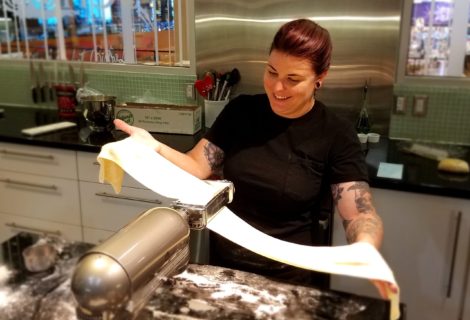
Legendary Lentils
If we were to pinpoint one food item that is used the world over, lentils would be it! Grown for over 13,000 years, starting from one single strain, we now have six different types of lentils through both selective farming ( taking seeds from the healthiest, strongest crops and planting them in the next season) and genetic modification. Regardless of where you stand on the platform of “Organic vs GMO”, there are good and bad things about both.
About 6,000 years ago BCE, Archeologists found lentil seeds in various tombs in the Middle East. From there, the Bronze Age and trade, brought lentils to Egypt, India, and the Mediterranean. Once of the many things I have found fascinating about this perfect pulse, is that it produces well in baron, dry soil. Though it thrives when watered, the plant itself produces more leaves than seeds, so the opposite is best for a plentiful seed crop.

Perfect Pulses
Pulses are part of the legume family, but the name specifically refers to the dried edible seed within the pod. While soy beans, fresh peas, green beans, and peanuts are in the same legume family as pinto beans, black beans, and garbanzo beans (chickpeas), the latter is preserved by drying.
Now, unless you’re a food geek like me, and interested in the history of where our food comes from, you’re probably wondering why I’m writing a book report on this strange food that you may or may not have heard of. So here’s a few things that I’ve found absolutely fascinating about lentils:
- You can find them in every culture’s food repertoire from ancient times to current.
- They are easy to grow in otherwise baron areas giving a source of nutrition to people in the hardest of agricultural areas.
- They are packed with the highest about of protein of any other legume, making it a viable solution in vegan and vegetarian diets, or times of struggle.
- Because of the trade in ancient times, there are so many different ways you can eat them!

Fast Food Done Right
Most often (depending on the type of lentil), these pulses cook in under 20 minutes and it’s easy to whip something healthy up on the spot. You can soak them over night, though unlike dried beans, it is not needed. You can cook lentils and eat it right away, or make a bigger batch and store them in the fridge for up to five days.
This these tiny seeds are full of beneficial plant compounds called phytochemicals which is said to help reduce chronic diseases, heart disease, and type 2 diabetes (PubMed Central). According to Healthline.com, one cup of cooked lentils contains 17.9 grams of protein (25% Reference Daily Intake), 90% RDI Folate, and 37% RDI Iron (a needed mineral for a healthy vegetarian diet).

Basic Lentil Recipe
- 1 C dried lentils
- 3 C water
- 1/2 tsp salt (if using Kosher salt, make it 1 tsp)
- 1 Bay Leaf
In a mesh strainer, rinse lentils well to remove any debris and add cleaned lentils to a med sized sauce pan. Add water, you can play with flavors and add stocks or herbs if you would like just taste your stock so you can control how much salt you need to add. Bring lentils and water to a boil, cover and reduce heat to a simmer.
Set your timer for 15-20 minutes depending on your preference of lentil doneness (for salads, I like to keep them slightly al-dente as they will marinate in a sauce overnight. If I am serving lentils as a side dish, I will cook them the full time). You can pull a lentil out at the 15 minute mark and taste to see if you want to cook more or pull them.
Once the lentils have cooked to your desired texture, stain the remaining liquid, S&P to taste and serve.



Recent Comments